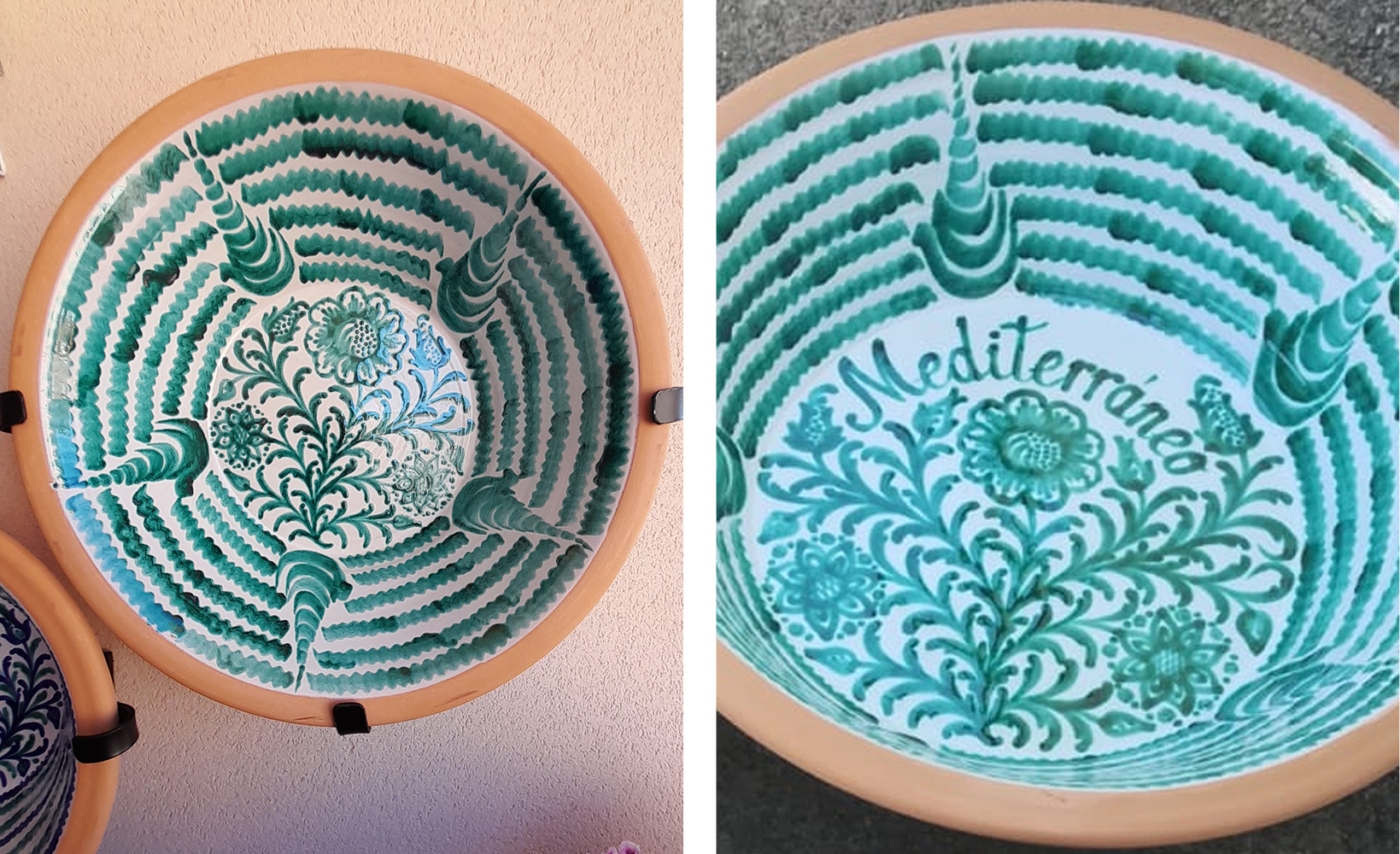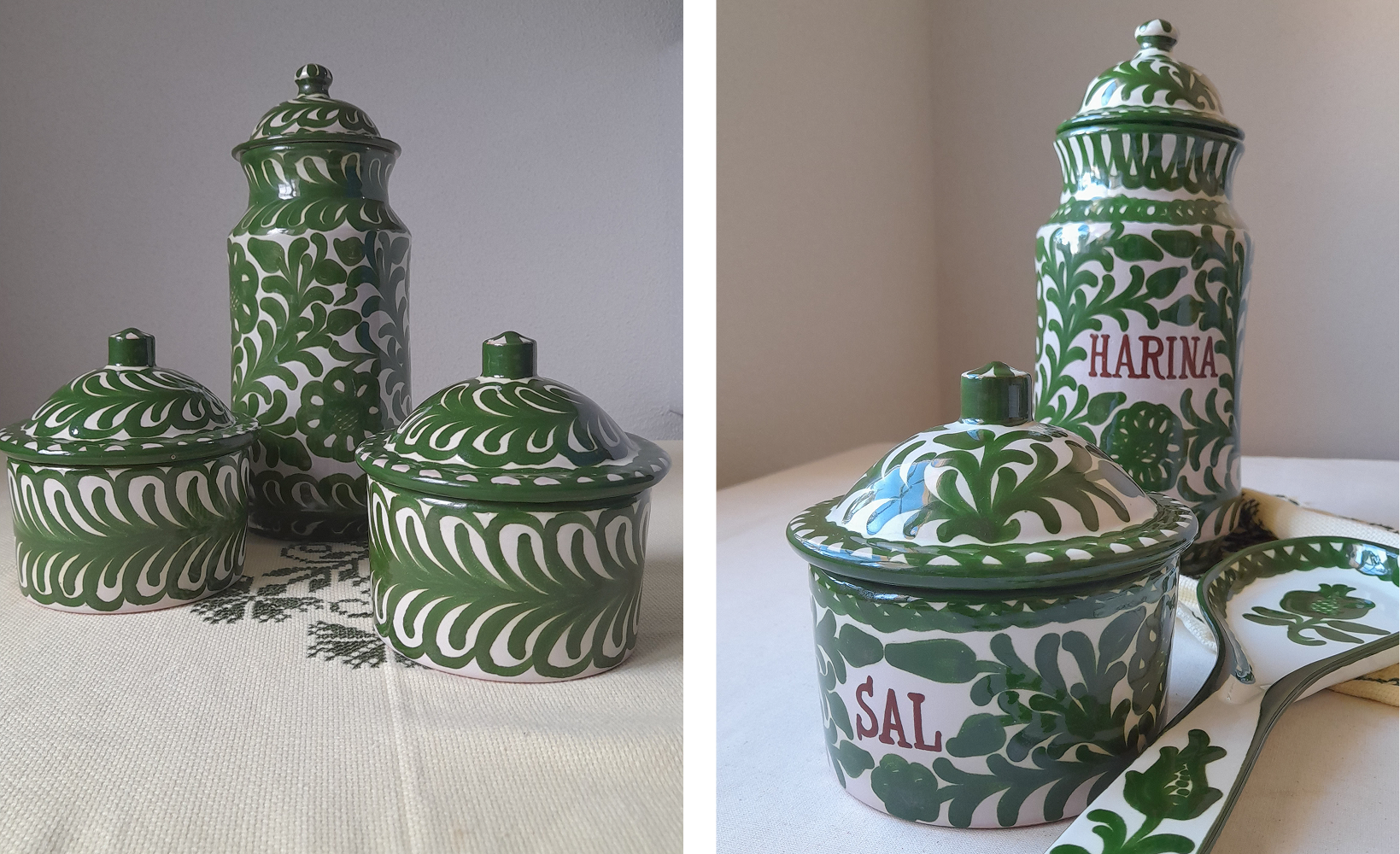A brief history of monogrammed ceramics
The Greeks and Romans were the first to use monograms to label coins and the official seal of rulers. As a subtle mark of ownership, the custom proved useful and popular in Europe. By the 18th century, it was common practice among European nobility to etch their initials in items as varied as linen, furniture or pottery.
The 18th century craze for Chinese porcelain in Europe led to a sub-genre in ceramics dubbed armorial porcelain. This new kind of pottery no longer featured a discreet mark to distinguish one's property. Imported from China, this style of tableware used the coat of arms, sometimes in combination with initials, as the main form of ornamentation.
European potters, eager to compete, produced local versions of Chinese-inspired ceramics emblazoned with the client's family crest.
As the custom spread in the 19th century, middle class families swapped the aristocratic blazon for a well-designed monogram. Far from being a European trend, the love of monogramming crossed the Atlantic and found a welcome home in the American South where the tradition is now as emblematic as a double first name.
Beyond its decorative and personal value, the monogram comes in handy in art history as a means of authentication. Potters and other craftspeople have long used their initials to identify their work. In its 87-year-old trajectory, the famed American studio Rookwood Pottery used a variety of designs of its monogram “RP” to identify its beloved ceramics.
How a monogram turns object into treasure
The classic monogram is a design composed of one person’s initials, as we might find on a signet ring. This style of personalization is especially meaningful on gifts.
In our fast-paced world, it takes effort to make time for friends and family. “Taking the extra step to monogram a gift for someone shows them you went out of your way to think of them,” says journalist Mary Catherine McAnnally Scott. And, she’s right.
Personalizing a gift speaks volumes of your affection for the recipient.

An heirloom for newlyweds or newborn
There are occasions when pairing the initials of more than one person makes perfect sense. Soon-to-be married couples initial their wedding invitations and other nuptial accessories.
Recently a Dutch client contacted us weeks before his newborn’s birth because he wanted to make a personalized lebrillo to welcome the baby. We monogrammed our Garza lebrillo bowl (seen above) with the first name initials of the client, the mother, and the baby.
In this case, the monogram signifies their special bond as a family. Their monogrammed lebrillo features a grey heron in flight in the center. Each parent’s initial sits at the top a branch on either side of the bird. The baby’s initial rests where the two branches meet at the bottom.
In fact, this bespoke lebrillo is an instant heirloom. That child will grow up with a tender memento of his birth and likely cherish it enough to pass down to younger generations.
Hand-lettered inscriptions on pottery
Where a monogram would be a deeply personal gesture, an inscription may offer broader scope. For example, a beautifully inscribed surname is an elegant mark of identity for family-owned earthenware. Below, we see a similar example.
This version of our Mediterráneo Lebrillo features a hand-lettered inscription that pays homage to its eponym. The artisan has adjusted the floral pattern so that the inscription fits seamlessly into the decoration.

An inscription may also be more suitable for utilitarian purposes. Ancient pharmacy drug jars, albarelos, bore the name of each medicine hand-painted on the exterior so that the druggist would never mistake one for the other.
In keeping with that tradition, we recently reclaimed the inscribed albarelo for a client who wished to make a large set of pottery. Recast as storage in the kitchen, these ceramic albarelo jars feature all-over decoration in a bespoke green of her choice. The name of each ingredient is woven into the design.

And, when marking a date, a numeral inscription turns your pottery into an elegant memento. Hand-painted, the inscription of “1927” below held a special meaning for this client’s family history. We personalized our La Dama Fajalauza plate to commemorate the date.

Though our artisans craft each piece with care, we understand that weaving your own story into a beloved object makes it invaluable.
Personalization is a mark of distinction. If you’d like to monogram your order of pottery or consider other ways to create a unique product with us, contact us through Custom Orders.

